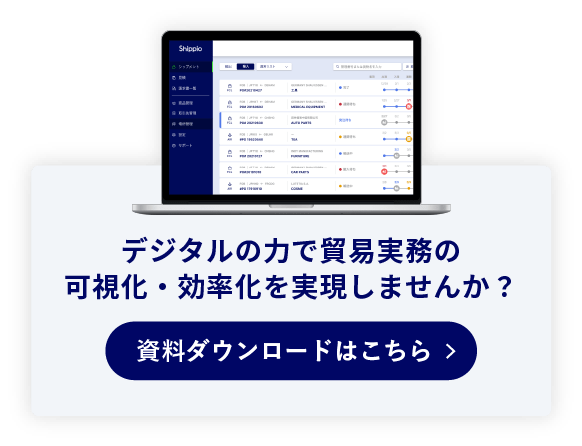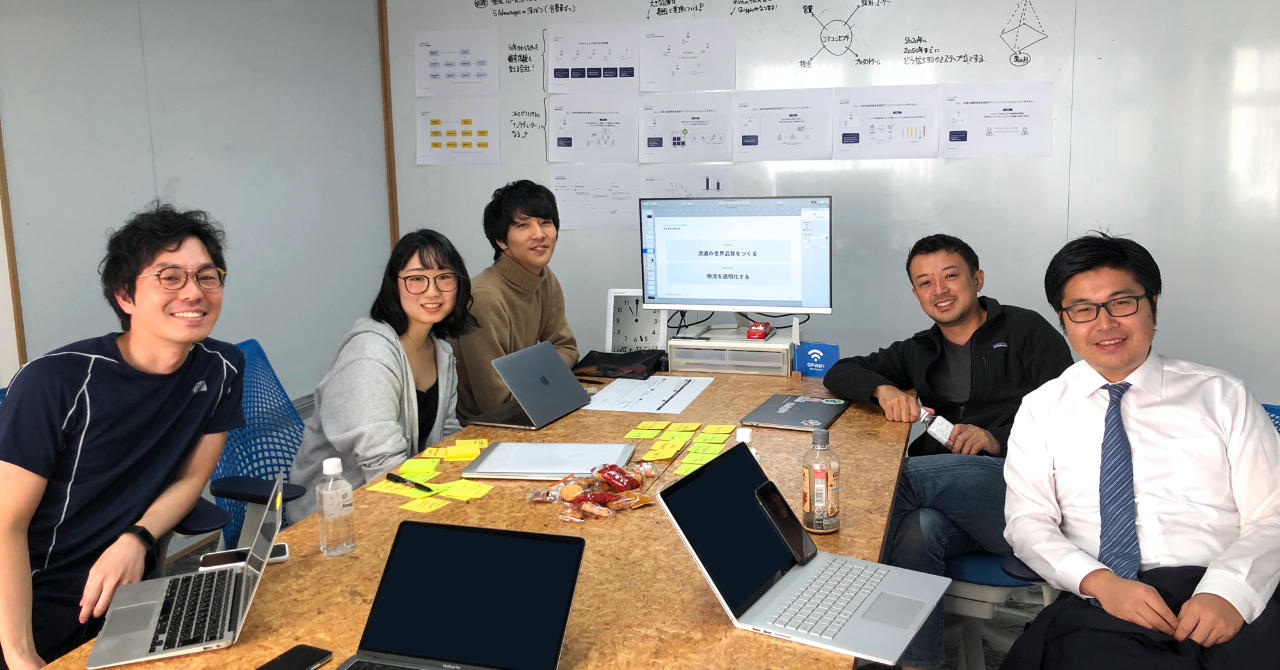
How the International Logistics Startup verbalized Vision, Mission, and Anchors in 3 months
*日本語はこちら:国際物流スタートアップが3ヵ月かけてVision/ Mission/ Anchorsを言語化した話
*This article was published in February, 2020, translated to English.
Hello! Thank you for taking your time to read my note!
I’m Takanori Sato, CEO at Shippio, an international logistics startup.
Shippio was founded in 2016 by myself and my co-founder & COO Takashi Tsuchiya.
We aim to solve the inefficiency and complexity of international trade and logistics by using the power of technology.
When you run a startup (especially your first one), you may find yourself struggling to find original words that express vision and mission, and how to install it into the team.
In my first note, I’d like to talk about why we now verbalized our Vision / Mission / Anchors, how we met Goodpatch, our partner who worked together on this project, and how we as founders, found each word by word through many thoughts.
Why I started my own business
I could easily write a full article if I start talking about this, so this is a short version.
I worked at my previous job (a trading company called Mitsui & Co., Ltd.) for 10 years, and for the last two years I worked at the “China Representative Office” in Beijing.
This was a department that planned and supported the discussions or decisions of “Representative of China,” who was the head of 1,000 members in China, Hong Kong, and Taiwan.
When my former colleague returned to Japan, I, who was then a member of CVC in Beijing, was assigned to the position.
Facing a challenging job and a sense of crisis of my soul being spoiled
The most interesting thing here was that I was able to work at a very close distance with the VIPs of Mitsui.
I had a chance to travel in the same car with the Chairman, have small dinners with the CEO, work on projects with the COOs and the people around him… etc. As a 30-year-old trading company member at the time, this was a wonderfully lucky experience.
In other words, it was a very tense environment, where I learned how to get people involved, how to prepare materials necessary to convince executives of large companies. Most importantly, I had a chance to listen closely to the management views of a company with a market capitalization of 3 trillion yen… I really learned a lot from this experience.
This was a very challenging job, but there were two big reasons that made me decide to take action.
One, I wanted to challenge more difficulties as a person while in my 30s, by looking into the enthusiasm of the management team (usually in their 40s and 50s) and working with the Chinese members who were all very energetic and ambitious.
Two, is the high salary and wonderful benefits that clearly are not worth one’s ability and achievement.
This might sound like a very good offer, but I felt an uncomfortableness that gradually ate away my soul for a long time, taking away my survival skills.
Well to be honest, there were many more reasons, incidents, and motivations, but let me leave that for another chance someday.
The night I decided to involve Takashi Tsuchiya (co-founder), and our return to Japan
It was around the spring of 2015 when I was thinking seriously about starting a business. I happened to be in the same taxi with Takashi Tsuchiya (Director and COO) on my way home from a catch-up with young colleagues. We went into a yakitori bar on 好運街, aka Lucky Street in a corner of Japanese restaurant in Beijing, to grab some more drinks. We talked like “How’s everything going?”
He was a young ace in the Beijing Energy Business team at the time, in charge of partnerships and negotiations with China national-owned companies on coal for thermal power generation. We were the same age, as he joined Mitsui two years after myself, after graduating from a University in the United States.
As we sat in the dim light drinking highballs, he said he is thinking about changing careers, with obtaining an MBA in mind, I believe.
He asked me “How about you, Sato-san?”, and I answered something like, “I’m thinking of going back to Japan and starting my own business.”
He said “I’ve never thought about starting a business, that sounds super interesting!”
It feels like this conversation was done a long time ago, and at the same time it also feels like it was very recent.
In the next minute he said “This is interesting, let’s do it. Should I tell my Boss I’m quitting the company tomorrow?”
I did calm him down, remembering to feel really happy and encouraging thinking, “Now I’ve got a really strong buddy…”.
After that, we decided to start our own business together, and we told the company of our intention to leave and returned to Japan in March 2016.
We had strategy meetings at Tsuchiya’s house every Saturday until we returned to Japan, but none of the ideas we came up with were ever used.
It is based on this experience that I often say that the ideas you came up with while working at the company are almost completely meaningless.
If I were to write in detail about what I’ve done so far, it would take up ten times as much space, so I’ll leave it for today and get down to the point.
 (Our first office, around May 2016)
(Our first office, around May 2016)
Why did I face Vision, Mission and Values now?
Now, let’s jump to the next topic.
In the summer of 2019, when Series A was heading toward closing, Tsuchiya and I were relieved that we had successfully raised a fund of 1.06 billion yen, facing the next issue. The organizational challenge.
The number of employees, including those who have been offered jobs, was then around 15.
While new people were joining the company, the organization atmosphere was becoming unstable as the CTO, who was with us since the early stage, decided to start his own business, and some of our early members decided to go overseas or become freelancers.
Closing the procurement? Sales and revenue? Product? Organization? Recruitment?…To be honest I was exhausted from negotiating for funding, and I think I was a little overwhelmed physically and mentally I couldn’t decide where to start.
At that time, Takashi Tsuchiya, COO of our company, had asked for advice several times about products, from Mr. Naofumi Tsuchiya of Goodpatch.
They were classmates from the same high school, and also played in the same club in their hometown of Nagano. They went out for lunch several times since we started our business.
His advice was, “Now that the organization is growing and the initial members are being replaced, the first priority is to verbalize the culture of the company.”
Although he was not even a shareholder, he gave us support many times. The bond of local community is strong.
With this advice, Tsuchiya and I talked it over and decided to challenge the verbalization of the company’s culture once again.

( “Tsuchiya duo” Mr. Naofumi Tsuchiya from Goodpatch on the left and Mr. Takashi Tsuchiya from Shippio on the right)
Our two failures in making Vision, Mission, and Values
I would also like to mention the two previous failures that led to this project.
Our company has failed twice in verbalizing and spreading our Vision, Mission, Values (V/M/V)
Our first trial was in November 2017, a year and a half after we started the company.
At that time, we had just finished the seed round, and the team had grown from a few founding members to about seven, when we rented a fancy space in Kamakura and planned an offsite meeting to take stock of what we had done.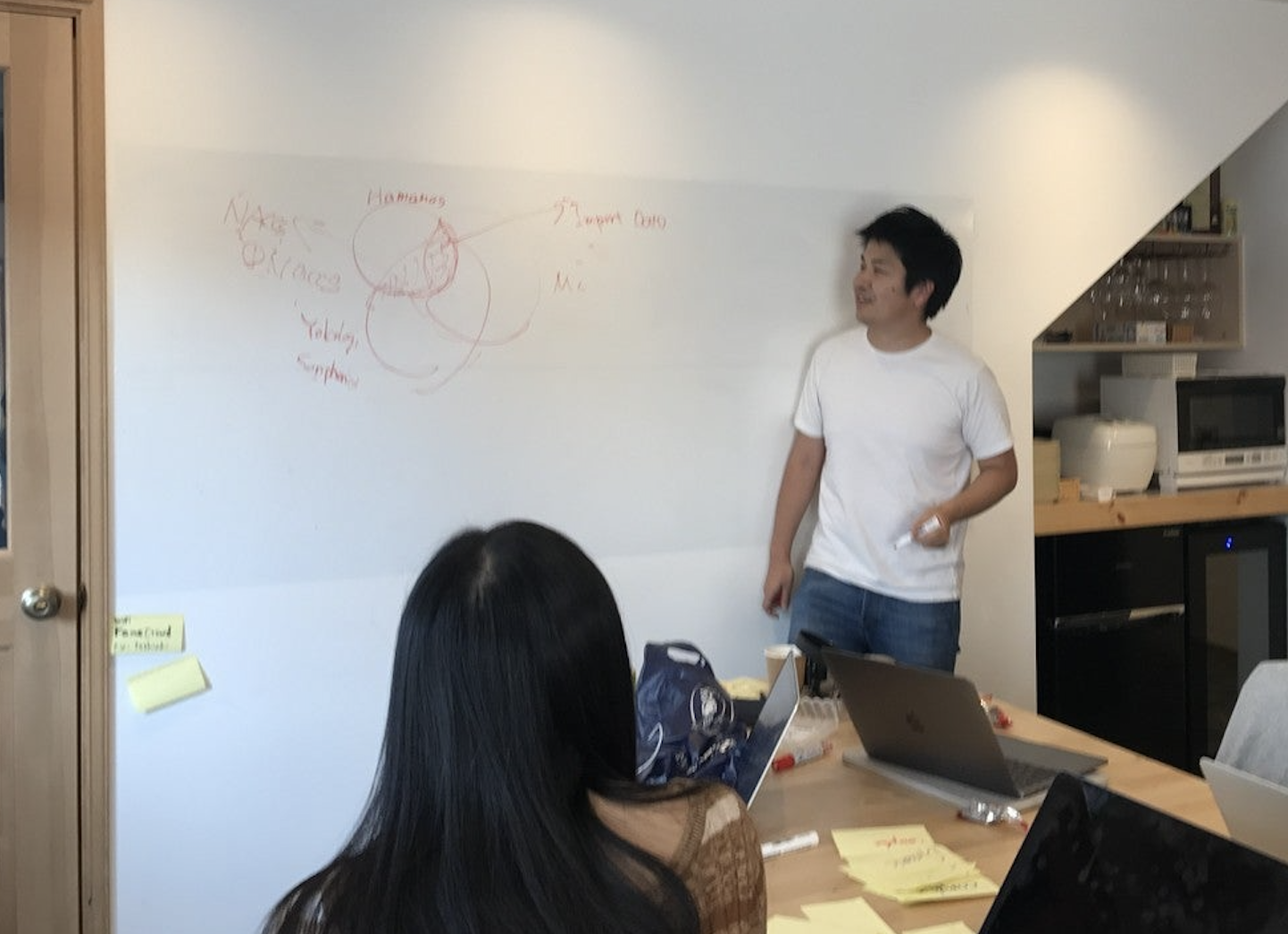
From this picture alone, it looks like we are discussing in a good atmosphere, but the V/M/V we discussed this time did not penetrate at all and we made a big failure.
I took this opportunity to look for an off-site meeting note and almost burst out my coffee in the office late at night.

Vision and Values are decided in an one hour meeting! Lunch is even longer than the discussion … This is scary.
It’s saying some good things, but there isn’t much to it.
I also made the mistake of writing in English from the beginning because I was obsessed with a Japanese-English hybrid organization at the time. (Incidentally, the culture of Trusted, Dynamic, Never Nostalgic, etc. has not changed since that time and is still used in different words today.)
The second failure was a two-day camp held in June 2018. The same mistake was again repeated here.
I could talk about this for about two hours, so I’ll skip it for now. To make a long story short, it is simply, “Lack of preparation & just ideas and vigorous”.
Success with the help from Goodpatch
In early October, based on past failures, I made the decision that “for the third time lucky, I will use the help of Goodpatch to create a corporate brand for Shippio based on the verbalization and penetration of V/M/V.”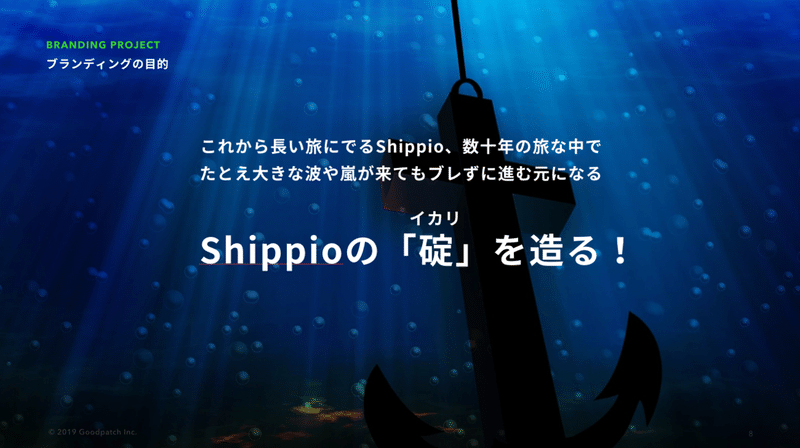
Personally, I was very particular about “Verbalizing the thoughts upon founding” “Making the content of the presentation sound exciting for ourselves” and “Discover how the people working here feel sympathetic about the company”.
I won’t go into the process, but I think we were able to take time to carefully prepare and discuss each item with the help of Goodpatch this time with the goal of completing it by the end of December.
For example, during the overnight camp, we talked about our views on life and work, our roles in the company, and our expectations. When I saw how interested they were in each other, asking questions and discussing, I felt proud that we have such sincere and pleasant members.
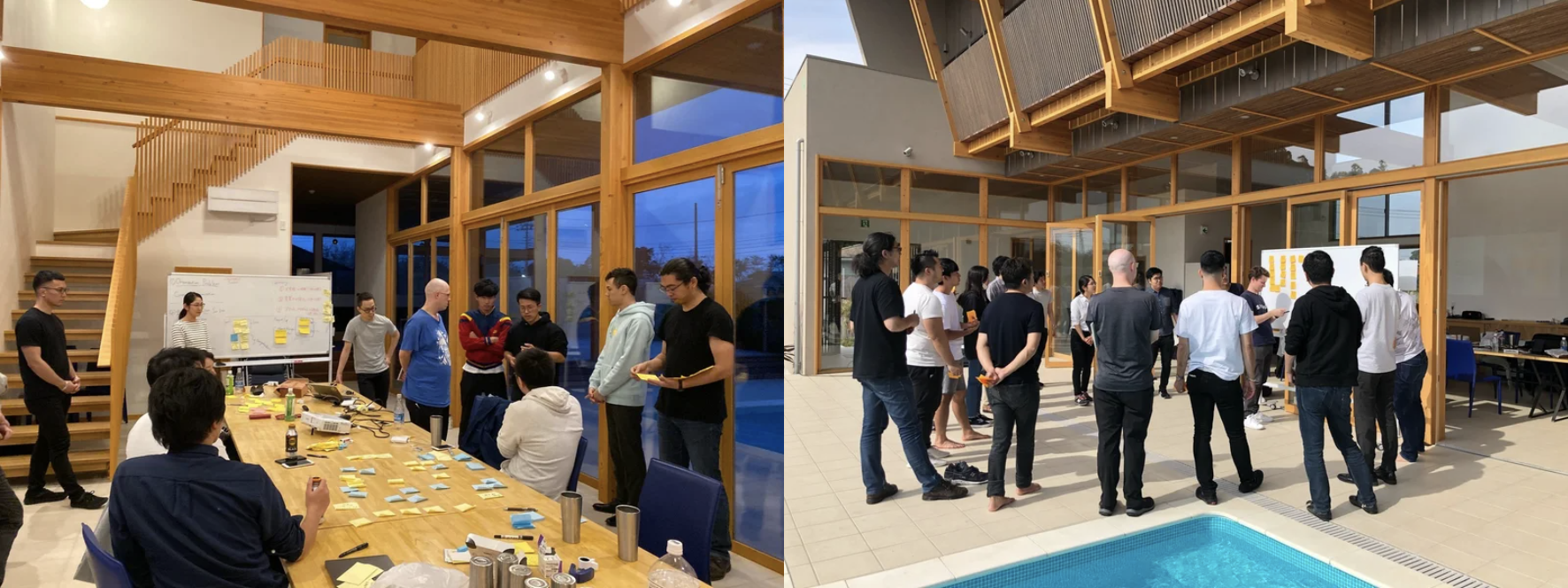
By interviewing not only our employees but also our stakeholders, such as investors and customers, about how they view us, we were able to reconfirm our gratitude for their expectations and trust in our company, and it also gave us an opportunity to think again.
To be exact, words like “Main Way” and “DOMANNAKA (Directly in the center)” are values that both Tsuchiya and I have valued since our days at Mitsui, and I was happy to see that they were being naturally conveyed.
When discussing the company’s mission and values, I recommend having conversations not only with members but also with stakeholders to review the company from multiple point of view.
And now we have Vision, Mission, and Anchors!
We have been finalizing our Vision/Mission/Anchors (=Values) during the year-end, and finally completed them at the beginning of the year! Here it is.

Our vision “Transcend Forward-Thinking”. Trade, which is a complex entanglement of logistics, commercial and financial flows, will now include elements of information technology. We aim to achieve our dream of reaching beyond the modern trade that has been continuing for hundreds of years.
In order to achieve our dream, we set our mission as “To be the compass of logistic innovation” by “Implementing the ideal logistics experience in society.”
There has been a lot of discussion about words here, and each word has the following meaning.
Ideal: Pursue the ultimate state of being that goes beyond partial or individual company optimization.
Logistics experience: Bringing the concept of “logistics experience” to the logistics domain, where the concept of customer experience is not common.
Implement in society: Have the people in the world can use it smoothly without being aware of it.
Next up is Anchors, which I personally am very emotional about in this project.
The reason why we don’t call it Values but Anchors, is because this is our unshakable “anchor” as we continue on our long voyage, even though we might sometimes feel defeated or anxious.
It was initially Goodpatch that first suggested the word “Anchor” to me, and I was struck and impressed by the idea..
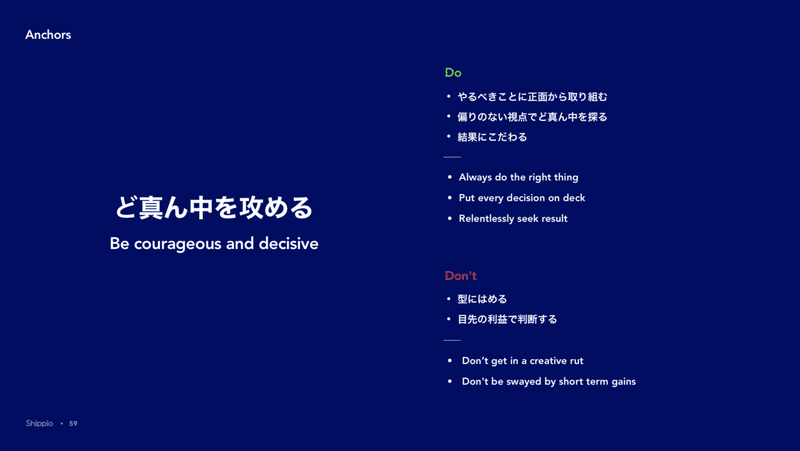
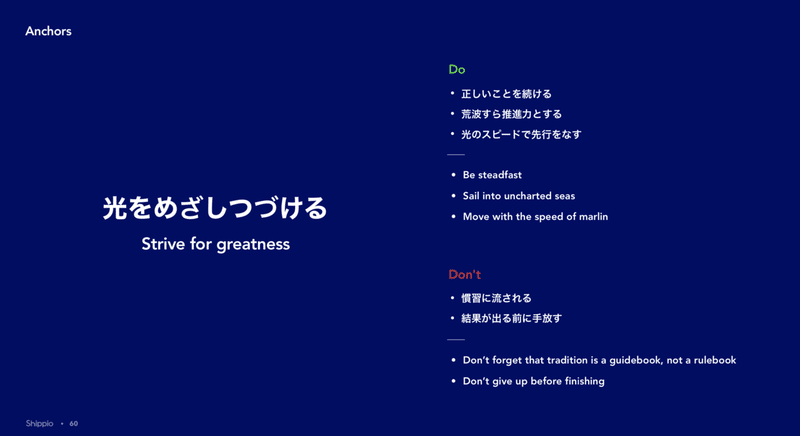
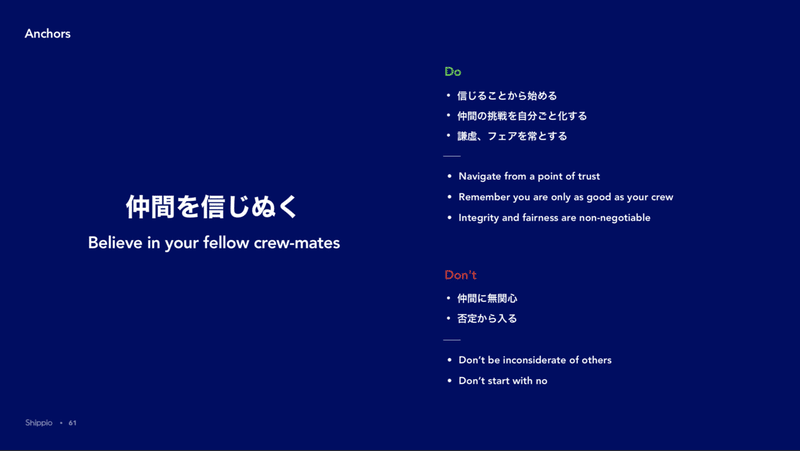
Be courageous and decisive
“Doing highly social business” was our theme with Tsuchiya since we were in Beijing. We also both like to talk about “Friendship, Effort, and Victory”.
I put into words our culture of taking the main way, choosing the middle and not running away from what needs to be done in any situation.
Strive for greatness
The light of the Northern Star and lighthouses are relied upon to sail through rough seas.
The idea was to encourage people to keep on going without losing sight of the light they are aiming for, even though there are good times and hard times in running a business.
As a side note, “speed of light” is a word that is frequently used among our teams, and when we say, “Get it done at the speed of light!” I’m glad we decided on it because it’s a simple way to communicate with each other. lol
Believe in your fellow crew-mates
Startups can sometimes be in a state where anxiety and frustration can easily propagate.
There are times when no one has the correct answer, but you still have to be brave enough to say something and get others involved to take on the challenge.
I chose this as the third anchor because I felt that what would support me the most at that time would be “mates” who believe in the same dream.
In addition to the nuance of believing in one’s colleagues and helping others in need, I borrowed (on my own initiative) the idea of “always be humble and fair” from Mitsui, which Tsuchiya and I shared when we were at our previous jobs.
During the discussion, Tsuchiya said, “We probably will succeed, so I think it’s better to put these words in our primary stage…” I couldn’t stop myself from laughing when I saw the depth of his confidence.
New logo!
As a by-product of this project, new logo was also created.
Although we had a big feeling for the previous logo, we have decided to use this more professional logo from the fact that we are receiving more inquiries and requests from B to B solid type customers than we had originally expected.
This is the so-called “Earth Axis Cut”.
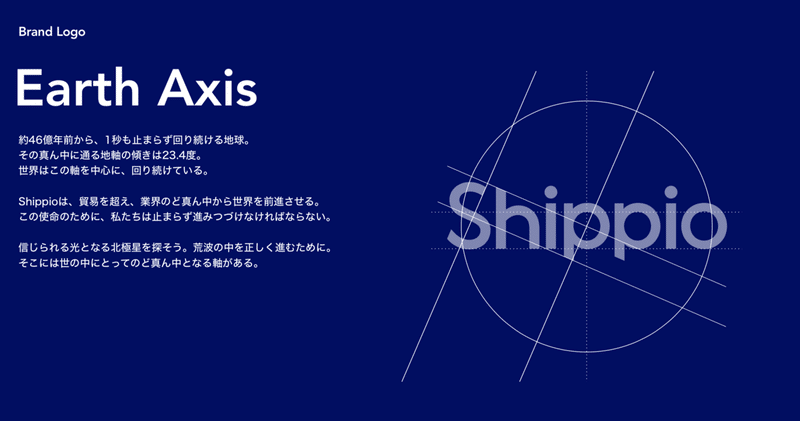

Towards the future penetration
Now that we have created it, it’s time to see how much we can install in the company.
We had an internal unveiling at the beginning of the year, and since then, we have continued to explain again in small groups in individual meetings, as well as internal workshops on V/M/A (again with the help of Goodpatch).
Also, when a new member joins, I take about an hour to explain how this V/M/A came to be.
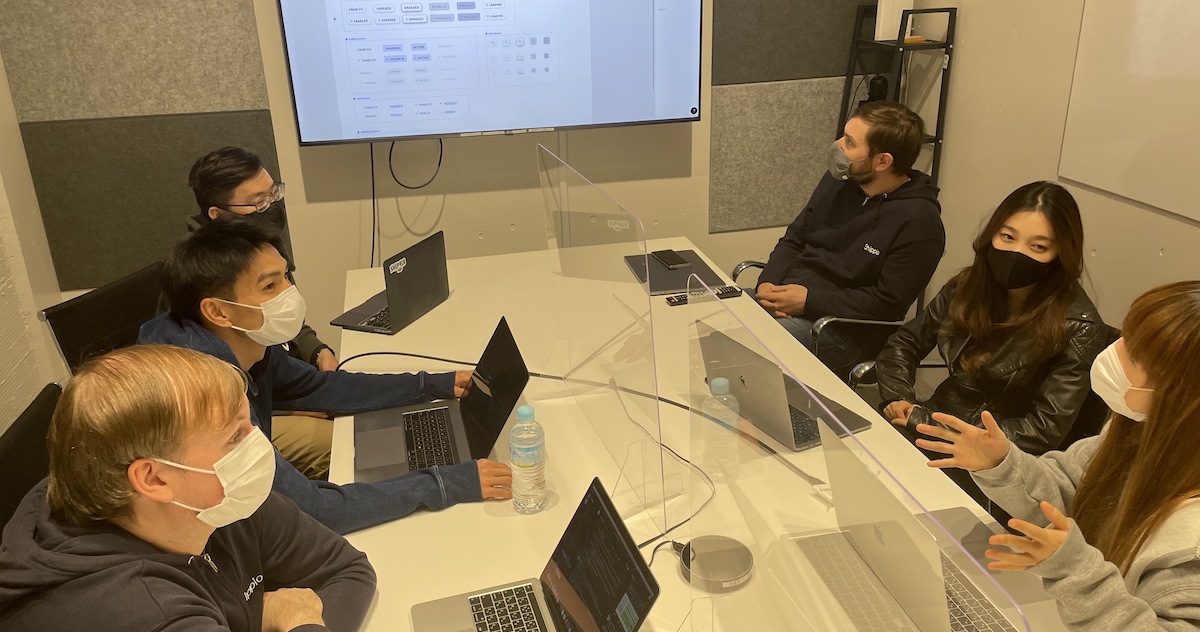
Last but not least
Thank you for reading to the end.
In one of Steve Jobs’ speeches, he talks about “Connecting the Dots”.
In short, it is about “You can’t connect the dots of the future in a proactive way. All you can do is to look back and connect the dots of the past. So you have to believe that the dots will be connected in some way in the future. You have to keep believing”.
I think this project is the result of the combination of the values, experiences, and thoughts of Tsuchiya and myself, also the stakeholders who chose this company (employees, customers, investors, etc.), the encounter of the two “Tsuchiya”s (from Goodpatch and Shippio) who met in high school, and the know-how and skills that Goodpatch’s Mr.Mouri, Mr.Iwata, and Ms.Yonenaga have accumulated as UX/BX designers.
I’d like to thank all the people who helped me accomplish this, and I definitely want to pay them back in a good way.
When I look back on the project, It makes me imagine how many people supported our business to come on stream.
This is still only about 0.01% of what we want to do, so we will continue to believe that the dots will continue to connect, and we will move closer “To be the compass of logistic innovation” by “Implementing the ideal logistics experience in society.” while creating our own unique culture.
We’re hiring for all positions!
If you have read this article and are interested in our culture, members, and business, please contact us!
We are welcome to just have a cup of coffee to talk casually.
We are currently hiring Product Managers, Designers, Engineers, Sales, Marketing, Customer Success, and Recruiting. We are all looking forward to working with you!
My Twitter account→ @LOGITARO1
Our company official Twitter account→ @shippioinc
Finally, here’s an interview I did with Mr. Naofumi Tsuchiya of Goodpatch and other project members about this project, “Designing from the inside out: the brand experience of Shippio and Goodpatch”. (available only in Japanese)
If you have time to read both, you will get a more clear vision of how the project progressed.
